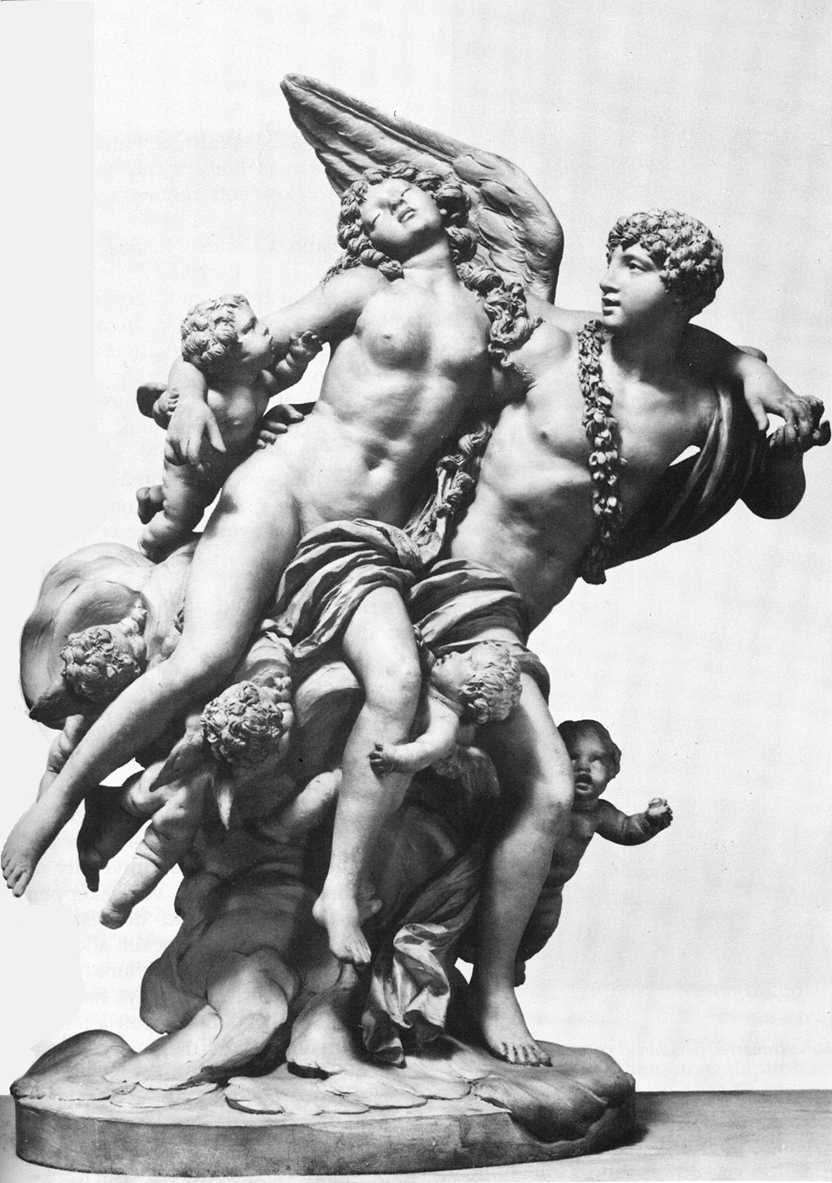Book Review: Only One Thing On Their Minds
Reviewed for Standpoint Magazine, December 2008

Heterosexual concerns: Cupid and Psyche at the Victoria and Albert Museum
SEX AND SENSUALITY IN THE ANCIENT WORLD 224pp, Yale, 224pp, £25
by Giulia Sissa
Female bodies attract male attention. Men spend plenty of time thinking about them, describing them and trying to explain them. They do across Britain and America today, they did throughout Greece and Rome more than two millennia ago.
That’s the basic premise of Giulia Sissa’s important new book. Sissa, an expert in the technique of comparative literature, has a sharp eye for debunking politically motivated revisionism in studies of classical culture. In this case, Sissa’s target is the modern obsession with Greek homosexuality.
Male-male eroticism, she argues, has been greatly exaggerated by classicists, and she surveys a mind-bogglingly broad range of classical and Christian literature to demonstrate the centrality of heterosexual concerns to ancient, male, writers.
Certainly, the Greek medical writers described male and female bodies as two halves of a necessary unit. A woman’s body was a male in negative: the ovaries were testicles, the womb a scrotum and the cervix a penis, almost as if they were male genitalia that had literally been turned inside out by the force of penetration.
Aristotle took issue with Hippocrates over whether females emitted semen – but only because he doubted whether women could produce anything worthwhile at all. In his asymmetrical biology, a woman’s body was a man’s without the best bits. To others, it was one that had been weakened and flattened.
These same assumptions litter the texts of the tragedies. In Euripides’ Medea, Jason acknowledges that he has destabilised his wife, Medea, because he has taken her marital bed from her. They each remind the other that the marital bed is a place of civil justice, because it is here, in the meeting of husband and wife, that the foundations of the community are balanced and made whole. Medea confesses that she will destroy herself when she kills her children, because they are as much a product of herself as of her man. This is not the literature of a society without visible roles for women.
Sissa should be lauded for pointing out that Greek men were as preoccupied by discussions of femininity as of masculinity. It comes as no surprise, however, that Greek aesthetics were as preoccupied with gender as were Greek social structures. Studies of Greek homosexuality have long acknowledged that even homosexual relations were expected to conform to a heterosexual paradigm. Nowhere is this truer than amongst the scholars whom Sissa most criticises for their focus on male-male relations. Kenneth Dover, in his seminal Greek Homosexuality, popularised the Greek term which described the effeminate partner in the ideal homosexual relationship. To please an older man, this partner must take on the “soft” qualities of a woman and, according to Dover, the consequent powerlessness.
To her credit, Sissa makes clear that commentators who assign power to the active and masculine role alone show a naïve reading of sexuality, ancient and modern. Hence the title of her book. For Sissa, “sensuality” is defined as “the desire to be desired” and constitutes the key to fulfilment for both Greek women and effeminate partners. Greek culture still comes out as deeply misogynistic in its denial of intellectual respect for women. Women may debate with men in the plays of Euripides, but in the reality of Athens they stayed locked indoors while their husbands sharpened each others intellects. Sissa’s subtlety is to demonstrate that female bodies could be afforded a prominent place in the collective culture, even when their minds could not. In the private sphere, this in itself gave them entry into the game of love, desire and sensuality.
Unfortunately, Sissa illustrates this analysis with a series of such arcane references to psychoanalytic theory that she risks alienating readers who do not share some of her more obscure assumptions. Comparative literature is a highly theoretical field, which is why it has need of visible dedication to concrete textual scholarship from its leaders if it is to defend its niche in the academic world. Sissa shows herself a brilliant researcher when she finds echoes of specific Greek heroines in later Christian writing, less so when she ponders them as examples of Jacques-Alain Miller’s models of the psyche.
In her anxiety to draw broad cultural conclusions, there are times when Sissa neglects to acknowledge that some of the examples she produces are more transgressive than typical in their representations of women. Medea’s murder of her children, for example, is presented as an inherent part of the classical conception of the dispossessed woman. As it happens, Euripides is thought to have invented Medea’s infanticide, although Sissa never mentions this in her analysis.
His play has come to dominate the surviving idea of Medea, but the earlier myths associated with her name are widely divergent and the mythical Medea most familiar to fifth-century Athenians would have been the heartbroken mother whose children were murdered not by her but by a Corinthian mob. When Euripides’ play premiered, the Athenian audience was actually in the middle of a war with Corinth, which made his absolution of Corinthian guilt a politically explosive move.
Sissa also suffers from the modern habit of transliterating Greek into English characters when quoting the originals – a trope of questionable logic, since ěpithūmeīˆn páscheīn (the wish to be passive), will be as incomprehensible to non-Greek readers as the original Greek. Yet such gripes are minor concerns compared to the praise owed for Sissa’s fresh approach to a subject with important ramifications for the West’s understanding of its sexual history. A reminder has long been overdue that the ancients were as obsessed by women’s bodies as everyone else.
Tags: Book Review






